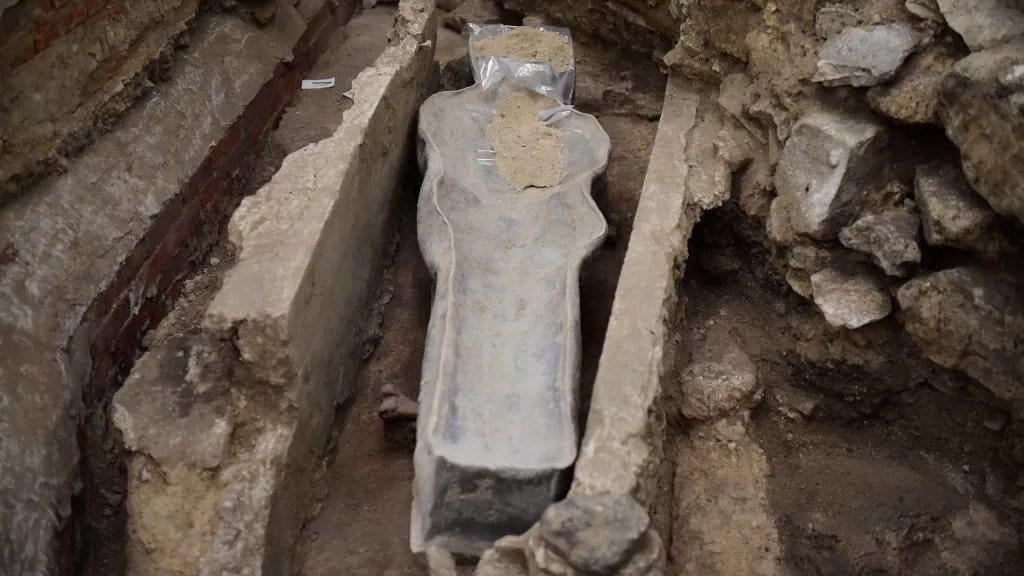14th-Century Sarcophagus Unearthed at Fire-Damaged Notre Dame Cathedral
The discovery was made as maintenance crews were preparing to install scaffolding before restoring the spire of the 800-year-old cathedral, which survived a huge fire in the spring of 2019.
French archaeologists conducting excavations in Notre Dame Cathedral found several burials made no later than the 18th century. Among them stands out the discovered anthropomorphic lead sarcophagus, which probably belonged to a high-ranking dignitary who died no later than the 14th century.
Notre Dame: History and recent fire
The Notre Dame Cathedral is located in the centre of the French capital, on the Ile de la Cité island, built in 1163-1345 on the site of the Gallo-Roman temple of Jupiter and the Christian Basilica of Saint Stephen.
The temple is a Gothic five-nave basilica with a short transept, a choir, and a crown of chapels. The facades of this building are decorated with sculptures, including scenes from the life of the Mother of God and the Last Judgment.
In the XVII-XVIII centuries, the interior and facade of the cathedral were significantly rebuilt. During the restoration, which took place in the middle of the 19th century, a 96-meter oak spire was built, which was decorated with bronze statues of the apostles and evangelists.
On April 15, 2019, a fire broke out in Notre Dame Cathedral in Paris, the fight against which took about 14 hours. Most of the structure that caught fire was wooden frame built in the 12th-13th centuries from 1300 oaks.

The source of the fire was located at the base of the spire, where restoration work was underway at that time, which began in 2018. Through the scaffolding, the fire quickly spread to the entire roof of the cathedral. As a result, the spire collapsed, damaging the vaults of the building.
New excavations at Notre Dame found a human-shaped sarcophagus
Archaeologists from the National Institute for Preventive Archaeological Research of France from February 2 to March 25, 2022, are conducting excavations in Notre Dame Cathedral, which precede the installation of scaffolding necessary for the reconstruction of the spire.
The researchers focused their attention on the central part of the temple, where the transept crosses the main nave.
Although some work on this site was carried out in the 19th century, archaeologists managed to find valuable historical finds. Scientists have unearthed several burials that were made no later than the 18th century.
Among them, a well-preserved lead sarcophagus made in an anthropomorphic form stands out. Archaeologists believe that it belonged to a high-ranking dignitary who died no later than the 14th century.
The coffin rested in the middle of brick pipes (a 19th-century underground heating system) and was well preserved, but slightly deformed under the weight. Inside, there are still pieces of cloth, hair, and a pillow of leaves.

Below the level of the temple, the researchers found the remains of medieval pits, which contained fragments of polychrome sculptures.
According to the researchers, these artifacts are the remains of the original altar barrier of the 13th century, which separated the altar part of the temple from the nave. Some of these finds discovered earlier, are currently exhibited in the Louvre.




